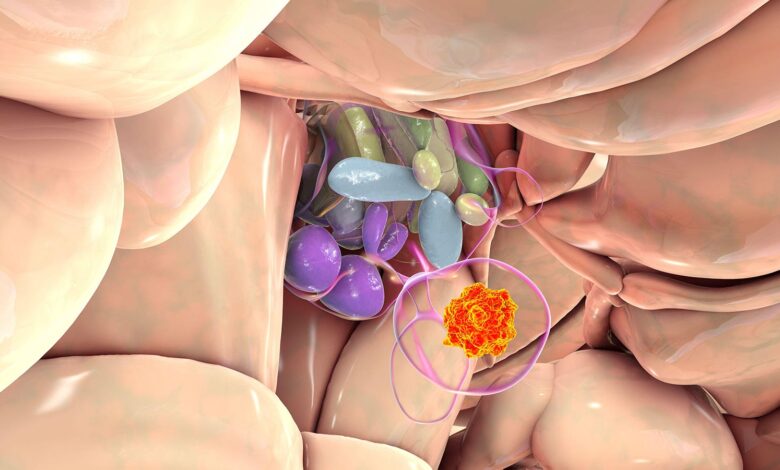Surgical Remission of Cushing’s Disease Tied to New Autoimmune Conditions

— But glucocorticoid replacement right after surgery may be protective
by
Kristen Monaco, Senior Staff Writer, MedPage Today
February 19, 2024
Development of autoimmune disease was more common in patients with surgical remission of Cushing’s disease than in those with surgically treated nonfunctioning pituitary adenomas (NFPAs), according to a retrospective matched cohort study.
At 3 years after surgery, 10.4% of patients with Cushing’s disease developed new-onset autoimmune disease compared with 1.6% of those with NFPAs (HR 7.80, 95% CI 2.88-21.10), reported Lisa Nachtigall, MD, of Massachusetts General Hospital in Boston, and colleagues.
Those with Cushing’s had a higher prevalence of postoperative adrenal insufficiency compared with patients with NFPAs (93.8% vs 16.5%), and lower postoperative nadir serum cortisol levels (63.8 nmol/L vs 282.3 nmol/L), they noted in the Annals of Internal Medicine.
Patients with surgical remission of Cushing’s should be evaluated for autoimmune and inflammatory disorders, Nachtigall told MedPage Today. As for patients who have symptoms of steroid withdrawal after being treated for Cushing’s — such as joint and muscle pain and weakness — she said clinicians should suspect a new inflammatory process or flare of a pre-existing autoimmune disease.
“It is important for doctors to be aware that autoimmune disease may occur in patients after surgical remission of Cushing’s disease, particularly so that such patients are not misdiagnosed as having steroid withdrawal syndrome, since specific treatments are available for autoimmune disease and may be indicated,” she added.
While the exact mechanism behind the link between adrenal insufficiency in surgically treated Cushing’s patients and the development of autoimmune disease isn’t known, Nachtigall noted it’s possible that low cortisol stimulates an inflammatory process, though more research is needed.
“It might also be interesting to evaluate if this same phenomena occurs in the wake of post-traumatic stress syndrome or after severe acute illness or injury, and other states in which cortisol levels are very high,” she continued.
Among the Cushing’s patients who went on to develop post-surgical autoimmune disease, a lower preoperative 24-hour urine-free cortisol ratio was observed compared with patients with Cushing’s without autoimmune disease (2.7 vs 6.3), as was a higher prevalence of family history of autoimmune disease (41.2% vs 20.9%).
While all patients received either 0.5 or 1 mg of dexamethasone per day during the first week after surgery, more patients without autoimmune disease received supraphysiologic doses of glucocorticoids — an >25 mg hydrocortisone-equivalent dose — compared with patients who developed an autoimmune disease (41.8% vs 17.6%). Those who had an autoimmune disease also received slightly lower doses of glucocorticoid replacement during the first postoperative month (17.1 vs 18.7 mg/day).
“It surprised us that relatively small dose differences in glucocorticoid replacement in the immediate post-op period seemed to have an effect on the likelihood of developing autoimmune disease,” said Nachtigall, “such that slightly higher replacement doses may be protective against getting autoimmune disease later.”
For this study, the researchers performed a chart review of patients who underwent transsphenoidal surgery — the first-line treatment for the majority of hypersecreting pituitary adenomas — for Cushing’s (n=194) or NFPAs (n=92) at Massachusetts General Hospital between 2005 and 2019.
For inclusion, patients had to have biochemical evidence of Cushing’s defined as elevated levels of 24-hour urine-free cortisol, late-night salivary cortisol, or both, and/or failure of cortisol suppression in response to a low-dose dexamethasone suppression test with clinical evidence after evaluation by a neuroendocrine expert. All patients had a central source of adrenocorticotropic hormone (ACTH) excess confirmed by preoperative inferior petrosal sinus sampling or postoperative pathology.
The average age of Cushing’s patients in the study was 43.5, and 88% were women. Mean body mass index was 34.5, and average tumor size was 5.7 mm. About a quarter of patients had a personal history of autoimmune disease. The most common types of new-onset autoimmune disease in this group were autoimmune thyroiditis, Sjögren syndrome, and autoimmune seronegative spondyloarthropathy.
“While this study was specifically in patients who had adrenal insufficiency after successful surgical therapy for ACTH-secreting tumors, the findings may apply to other patients with Cushing’s,” Nachtigall said, such as those with the condition due to ectopic or adrenal tumors or supraphysiologic exogenous replacement.
The findings may also hold clinical relevance for patients on high-dose exogenous steroids for other medical conditions, who may be at risk for developing autoimmune conditions due to suppression of the hypothalamic-pituitary-adrenal axis as steroids are tapered or stopped.
-
![author['full_name']](https://clf1.medpagetoday.com/media/images/author/kristenMonaco_188.jpg)
Kristen Monaco is a senior staff writer, focusing on endocrinology, psychiatry, and nephrology news. Based out of the New York City office, she’s worked at the company since 2015.
Disclosures
The primary funding source for this study was Recordati Rare Diseases. The research also was supported by the Harvard Catalyst, the Harvard Clinical and Translational Science Center, and financial contributions from Harvard University and its affiliated academic healthcare centers.
Nachtigall and co-authors reported relationships with Recordati, Corcept, the Endocrine Society, Pfizer, and Amgen.
Primary Source
Annals of Internal Medicine
Source Reference: Nyanyo DD, et al “Autoimmune disorders associated with surgical remission of Cushing’s disease” Ann Intern Med 2024; DOI: 10.7326/M23-2024.


